Are You A Vanguard? Applications Now Open
AP Photo/Matt Rourke
This is your first of three free stories this month. Become a free or sustaining member to read unlimited articles, webinars and ebooks.
Become A MemberIn Philadelphia, every new mayor gets sworn in at the Academy of Music, the oldest opera house in the United States and a perch for the city’s graying elite, festooned with gas lamps and chandeliers. But the incoming exec dictates the details of the inaugural celebration that follows, and it’s equally traditional for that party to set the tone for the new administration.
When former Mayor Michael Nutter, a bookish reform candidate, took office in 2008, he arranged for 2,000 guests to board a cruise ship docked in the city’s defunct Navy Yard, which was being slowly transformed into a tax-free business park. The $50-a-head fete was billed as a salute to the city’s neighborhoods, but the real message was clear: Philadelphia was open for business again.
When Nutter’s successor, former Councilman Jim Kenney, was sworn in last month, he threw a block party, the ultimate community tradition in a city of narrow streets and tightly packed rowhomes. The son of a working-class Irish family from the dockside neighborhoods in South Philly, Kenney was hailed as the “anti-Nutter,” a folksy, relatable mayor who would shift the city’s political focus away from downtown business interests and back to taxpayers feeling alternately thrilled and threatened by their hometown’s recent resurgence.
The night’s theme was, once again, nominally about neighborhoods, as evidenced by the event’s emcee, Jerry “the Geator” Blavat, a popular oldies DJ in town, and several local sports mascots surreally chanting words like “Kenney,” “neighborhood” and “community” in rhythm with “The Twist.” But there was a dual message in the trendy food trucks set up to resemble a popup street fair: This wasn’t your standard Philadelphia political affair.
The catering choice was a hip nod to the young voters who flocked to Kenney’s progressive, urbanist campaign messaging. Standing there munching on a Korean-style cheesesteak topped with kimchi, along with the Philly customary processed cheese sauce, it was easy to feel that the party was ringing in the city’s first millennial mayor, albeit one nearing the average retirement age and incongruously backed by strong-arm construction unions and city hall insiders.
As the incoming mayor was taking pains to demonstrate, he is an old-school rowhouse guy, but one that supports a new breed of Philly urbanity that involves more food trucks and fewer cars, taller buildings and the possibility that Philly could stand to tamp down its we-are-not-New-York rhetoric and learn from its neighbor to the north’s walkable streets.
“He’s such a weird messenger for these policies,” says Jon Geeting, a flannel-clad, bespectacled editor for PlanPhilly, a local planning news website, and one of the guiding forces behind the 5th Square, a Philly-focused PAC established in 2015 to advocate for an urbanist agenda on transportation, land use and public space policies. (5th Square endorsed Kenney.) “If all you knew about Kenney was his bio on paper, a South Philly, Irish-Catholic guy in his 50s, or who his political base in the city is, you’d probably start out thinking he’s somebody who is skeptical of the things urbanists want.”
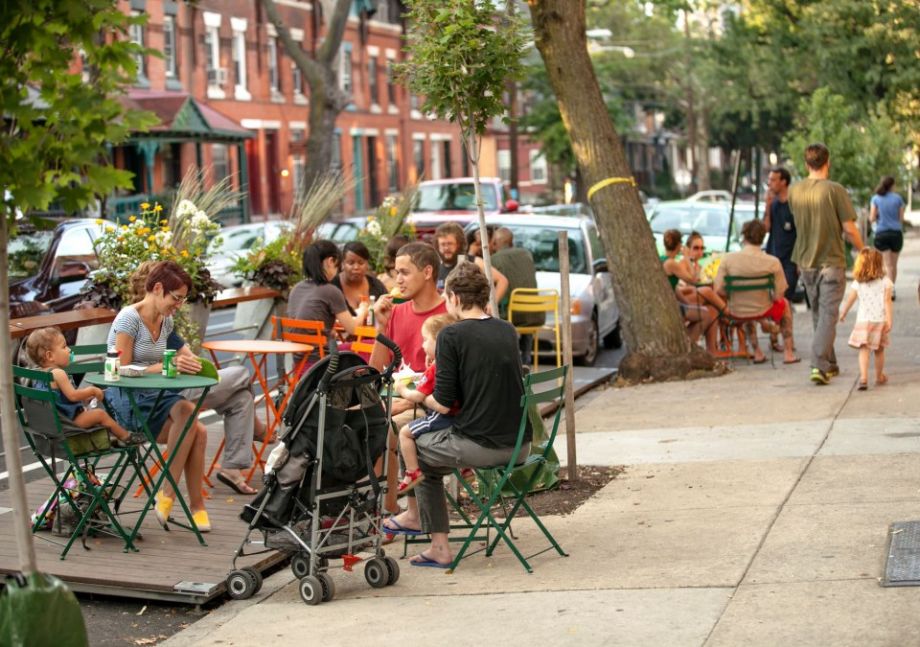
Young voters moving to Philadelphia often support urbanist movements such as turning parking spaces into “parklets” like this one on 44th Street. (Photo by Ben Tran, courtesy of University City District)
And there’s reason for some skepticism. Kenney paints himself as a regular guy who learned to recognize the value of smart growth policies during his 23-year tenure on council, but sometimes it feels like he may be more interested in throwing around buzz words than actually getting into the nitty-gritty of making change in the city’s neighborhoods. He proposed (and, later, quietly withdrew) an iffy proposal to create loads of affordable housing out of recycled shipping containers and has sometimes dithered in the face of complaints about taller and denser development.
Even the inaugural “block party” itself was an implicitly ersatz affair, tucked inside the second-floor hall of the Convention Center on a blustery January evening.
But Geeting, who lives with his wife, a professional baker, and their infant daughter in a South Philadelphia neighborhood that has been flooded by similarly young, hip families in recent years, also says he’s convinced Kenney is the real deal.
“It’s the same way with his stance on a whole bunch of issues,” he says. “Immigration, the Black Lives Matter movement, LGBT rights, where you might not think a guy with his profile would be that interested, when in reality he actually gets extremely fired up about them.”
To Geeting, these are all urbanist concerns in a way, but to many of his millennial peers, they are simply the issues of the day. As Larry Platt, founder of civic-minded media nonprofit The Philadelphia Citizen, puts it, millennials love Kenney because “he’d grabbed the low-hanging progressive fruit — LGBT equality, marijuana decriminalization, bike lanes.”
Platt notes the wisdom of a platform that appeals to a segment of the city’s population — 27 percent — that’s growing faster than in most other big cities. And Kenney does have a legitimate track record on those topics — getting council to decriminalize marijuana, seeing through hate crime legislation for gay and transgender Philadelphians, and winning gender-inclusive bathrooms for city buildings. Just hours before his big inaugural bash, he signed an executive order restoring Philadelphia’s status as a sanctuary city for immigrants. After just a few weeks at the mayor’s desk, he announced the creation of a new city job: Philly’s first-ever “complete streets commissioner” will focus on making streets more multimodal and accessible to cyclists.
Perhaps more importantly in a city where a Pew study found that 29 percent of millennials said they planned to leave the city because of failing schools, Kenney positioned himself as the education candidate. He pushed a model for “community schools” pioneered in Cincinnati, another rebounding city pushing itself to retain a growing population of educated young adults.
This big tent approach is part of why he was elected in one of the biggest landslides in city history. But when you talk to Kenney, he says these successes are also proof he can succeed in advancing city planning policies that promote things the young, carless set likes: walkable, safer streets, more amenities and more housing, preferably of the affordable variety.
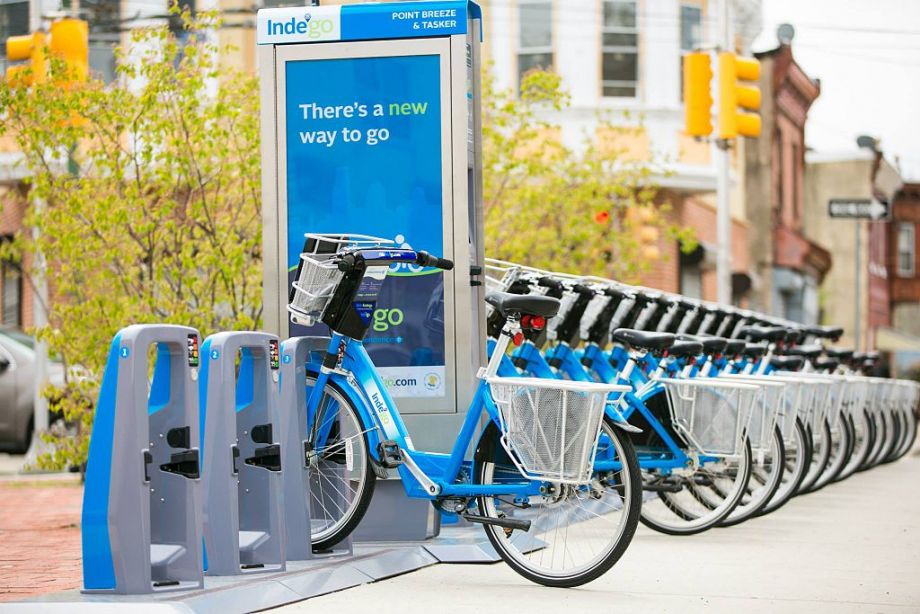
Many Philadelphia millennials are choosing to use public transportation or the city’s bike-share rather than drive. (Photo by Tyree303)
He wants you to believe he’s uniquely placed to win over people like his baby boomer friends and neighbors in places like his old ‘hood, where bike lanes are a punch line, car-free streets unthinkable, and development’s just a nuisance. He’s says it’s because he’s been through worse. After all, these are the same guys at his corner bar who laughed in his face 15 years ago when he told them LGBT rights were important. But Kenney won those fights and kept getting elected.
In other words, “weird” could be good, especially when city planning has a history of the urbane foisting policies on the less well-to-do, despite opposition from the latter. In 1961, Mayor Richardson Dilworth, a Nutter-esque patrician elected in a wave of anti-corruption sentiment, was pelted with rotten tomatoes by a mob of some 2,000 South Philadelphians for trying to enforce parking codes. Loose regulation had led to residents parking their cars down the center median of Broad Street, an illegal practice that continues today on the major thoroughfare.
Yet on Kenney’s first day, he ended the equally questionable tradition of municipal grandees parking their cars on the sidewalk around city hall without so much as a squeal of public dissent. So, maybe Kenney is a bridge-builder for those third-rail issues — a messenger who can speak the language of skeptical colleagues on council.
But winning over a dozen politicians is a little different than thousands of tomato-wielding voters. Especially when they’re people you’ve known your whole life.
In many ways, Kenney can be viewed as the reaction to eight years under Nutter.
Nutter, like Kenney, grew up in a rowhome neighborhood. But he was Ivy League educated and had a reputation for a frosty, no bullshit attitude — a baby boomer cut from the pro-business “new Democrat” cloth of Hillary Clinton. But what seemed refreshing in 2007 became a political hindrance as Philly’s public fears turned from out-of-control crime and a lack of private investment to underfunded schools and gentrification anxieties. Nowhere was this more true than on city council, which came to openly decry Nutter’s mayoral agenda.
During the race to succeed Nutter, Kenney played up the image of himself as a progressive nice guy from a blue-collar family, or “Jimmy from the block” as his campaign persona would be termed in the local media. The hallmark of his policy agenda was his support for universal pre-K, but his staffers also got him to use language like “open streets” and “vision zero,” concepts the former councilman had not pushed before the campaign.
It was a move that helped make Kenney seem like a serious mayoral candidate, but it was also a one up to Nutter, who had curbed his planning ambitions as his political capital waned. As the new mayor moves to actually make good on some of those pledges, Kenney says he believes his predecessor didn’t get further because of “communication” problems.
“It’s about working together to devise a consensus that’s doable and can be moved forward as opposed to dictating to people what’s going to happen,” he says. “I think it’s communication with the community, with the elected officials, with city council members.”
This is the nice guy Kenney talking, the one who was put forward during the campaign. Over his years on council, people also saw the hothead Kenney, The guy who would go off in legislative sessions, and tweet at conservative politicians he doesn’t care for. (In 2014, he famously called Chris Christie a “fat ass” on Twitter when the New Jersey governor was spotted watching an Eagles-Cowboys football game from the Cowboys owner’s box.) Although his comfort with social media might be another ”millennial trait,” his campaign staff later admitted they experimented with an app that would let them screen Kenney’s tweets for similar outbursts.
His current, collaborative rhetoric is betrayed by shades of the “other” Kenney that comes out when he’s asked how to build consensus with people like his old neighbors — people who think even one more apartment is too many, one less parking space a travesty.
“Some of these folks who are just set in their ways and chained to their car are never going to agree with you. There are people I know that will get in their car and drive four blocks to the supermarket. I mean, how do you reinvent that for a person?” Kenney asks, with a note of frustration.
Inside a packed church basement in South Philadelphia, nearly 100 neighbors had assembled at a civic association meeting last May. They were there to express rage.
The issue at hand was not one of Philadelphia’s urban crises du jour — the chronically underfunded school system, police brutality or even gentrification. This was a zoning meeting for a modest, 18-unit apartment building that would have replaced a 30-year-old vacant lot across from one of Philly’s top tourist attractions, Pat’s Steaks. The issue was parking, and more residents and more commercial space meant less of it.
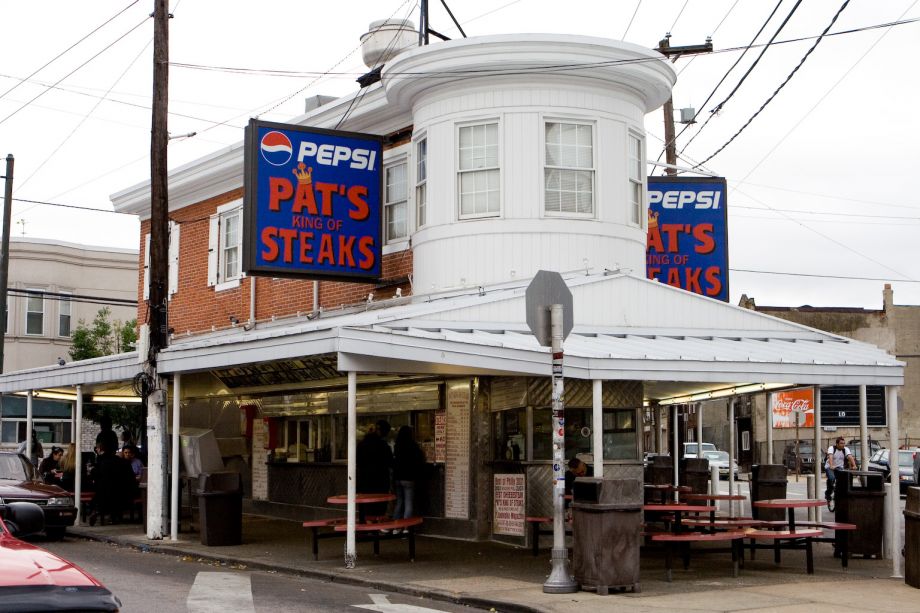
Pat’s King of Steaks in South Philadelphia has been operating since 1930. (Photo by lmnop88a on flickr)
Vitriol from the crowd, mostly older residents who had grown up in the historically Italian neighborhood, got so intense at one point, that a moderator asked politely for attendees to “not scream” when they stepped up to comment. The proposal, unsurprisingly, got sent back to the drawing board.
As the plan went down in flames, a representative for local Councilman Mark Squilla, another neighborhood guy who rose to a position of power, was on hand. “I’ve lived with these people all my life,” the rep said. “Whatever they want, I’m with them.”
This is the legitimate fear for how Kenney’s urbanist pitch could pan out. A lot of people in Philadelphia, and especially the older, white, working-class folks who make up sizable chunks of the voting public in South and Northeast Philadelphia, hate the urbanist policies on an existential level. It can already be hard to say “no” to folks who have been at the table the longest, let alone when they’re screaming in your face.
While many millennials streaming into Philadelphia theoretically support increased density and safer streets, the Geetings of the world are still just a tiny, vocal minority. And as the smattering of younger faces at the Pat’s meeting evidenced, they’re far less likely to show up for a meeting to advance that agenda.
Barring some high-profile races, the same goes for elections. Andrew Stober, a former city planner, quit a $129,000-a-year job to run for city council in November on an urbanist platform. While he got decent support for a first-timer, he lost by a wide margin.
Stober now looks optimistically to Kenney to finish what he started in the planning department, to make the ideas he tried to bring to city council a reality.
“I think in the past you had messaging problems and messenger problems. I don’t look like most Philadelphians,” says Stober. He is young, white, wears silver, thick-rimmed glasses, rides a bike and carries a messenger bag. He is also Harvard educated and from out of town. He loves Jim Kenney.
“I think that Kenney speaks very convincingly about his own evolution on a variety of issues,” he says.
Stober believes the way to reach people is to appeal to their humanity, citing grim statistics about pedestrian safety — more people are hit and injured by cars in Philadelphia each year than are shot in a city with a reputation for high crime. Last year, 390 were children under the age of 15.
“[Kenney] is very passionate about sticking up for the little guy, for anyone who is disadvantaged. And these are policies that are fundamentally about the little guy. I think he may turn out be a really good spokesperson for these issues,” he says.
And it’s true that these facts can help broaden the appeal of urbanism beyond a core of young, downtown transplants.
“I think a lot of people don’t see things from other people’s perspectives, like if you’re a driver you just see the bike lane as taking away road for you to drive on, when actually it’s healthy because it keeps traffic separated, it keeps you from crashing,” says Waffiyyah Murray, a coordinator for the Bicycle Coalition who promotes bike and pedestrian safety to parents and children in public schools across Philadelphia. “I think they might not see it at first, but it’s a matter of getting people to look at it with the right set of eyes.”
“[Kenney] is very passionate about sticking up for the little guy, for anyone who is disadvantaged.”
Yet so often the human side of better planning is obscured by parking, the raison d’etre for the dustup over the project near Pat’s Steaks. It’s a hell of a motivator. The issue brings out people who have likely never been motivated to rally against city policies that led to a child being struck by a car, even though these tragedies have happened in every neighborhood, not to mention immigrants’ rights, police reform or any of the social causes Kenney supports.
Even a planned road diet that would have made a dangerous, six-lane avenue in the same Philadelphia neighborhood safer for pedestrians and cyclists collapsed after outcry from established businesses. When it comes down to softer civic issues — zoning exceptions for new apartments or new liquor licenses for sleek gastropubs, uses that often explicitly cater to an ascendant population of transplants — opposition from an older generation of neighbors is almost a given.
And city hall pays attention to stuff like this.
Philadelphia is a famously dirty place, but that’s partially because it’s the largest city without a comprehensive street cleaning program. As Kenney recalls, the service ended in South Philadelphia because people kept complaining about having to move their cars and the resulting parking tickets when they didn’t.
Faced with mounting protests and a tight election, Squilla’s predecessor voluntarily abandoned the program.
“It was only once a week, but he took so much grief for it, he stopped the program from fear of not being reelected,” Kenney says.
Toni Pelosi is a hospital worker who has lived in South Philadelphia for 38 years, raised two children there and over time, become a vocal participant in her neighborhood’s development. She was at the Pat’s meeting, and plenty of others. Although she derided the anger that came out at that meeting, she is opposed to apartments because she believes they bring in “transients,” and also because “parking here is a nightmare.”
“You come home at 5:30 p.m. you might have to park three or four blocks away,” she says. “I’ve often thought that if there was a wish list, well, we pay taxes, we keep our homes up, why can’t we have the parking spot in front of our house?”
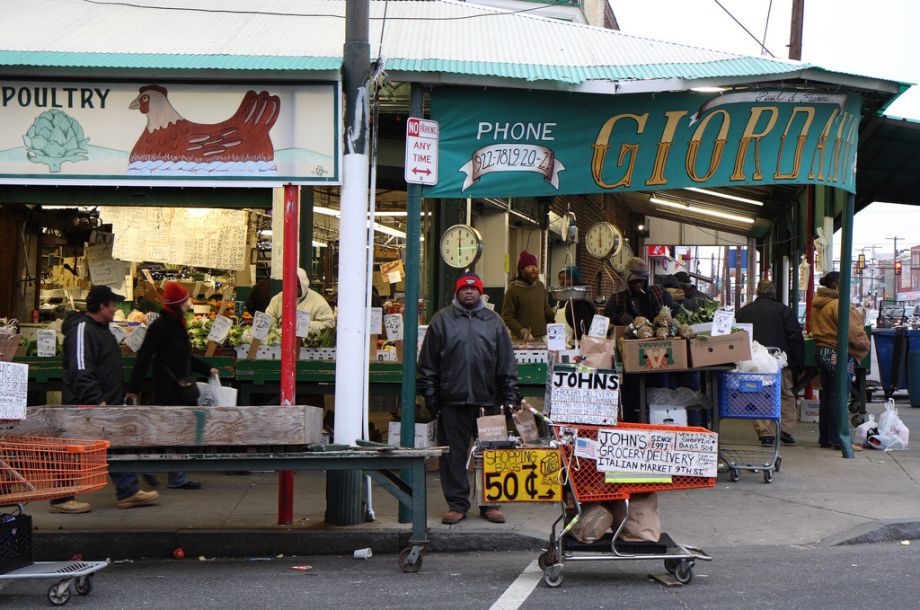
Philadelphia’s Italian Market in South Philadelphia is home to many grocery shops, cafes, bakeries, cheese shops and butcher shops. (Photo by Irina Souiki on flickr)
Pelosi admits this idea is not feasible, but that she doesn’t know what the solution is, just that there’s a problem she and all of her neighbors see every day. She says encouraging density, promoting ground-floor commercial space and eliminating mandatory parking in the zoning code were turning Philadelphia into “New York South,” a vision she didn’t sign up for when she bought her house.
She brings up Kenney’s agenda without prompting.
“Mayor Kenney wants to make the area more pedestrian friendly. Okay, yeah that’s great, but Kenney I happen to know has his own parking spot,” she says, referring to a parking area at Kenney’s condo. “He’s coming here asking others to make sacrifices he doesn’t have to make. You’re asking constituents to give up their right, their freedom to have a car.”
Behind Pelosi’s complaints are some pretty relatable fears. That, to her, the city is morphing into a place where the young and childless get preference over older people or families and that a tide of new residents will erode a long held feeling of community.
She says that virtually all of her neighbors feel the same way she does and are afraid that people like Kenney (who, for the record, takes the subway to work) will turn Philadelphia into New York, minus a robust rapid transit system. Much of the city is covered by bus lines, some of which are notoriously unreliable or overcrowded, and nowhere is this more true than in South Philly.
“If I were young again, I wouldn’t have a problem. When you have kids, you have to take them to school or run errands and it’s a real hassle to take them on the bus,” says Pelosi. “In a perfect world, we could all take the bus.”
It’s statements like these that belie the depth and complexity behind otherwise eye-rolling community outrage. People aren’t worked up about an apartment; the apartment is just the manifestation of a lifetime of perceived slights, inconveniences and failures.
“I think the feelings about these issues are very real and come from a very genuine place,” says Stober. “They come from a place of concern about the welfare of their community.”
Pelosi’s fears that Philly will literally become the next New York are remote at best, but to be fair, Kenney does frequently talk about visiting places like the East Village and some of the municipal policies he’d like to emulate locally. But Gotham has faced similar opposition to street redesigns, bike infrastructure, density and affordable housing in its working- and middle-class neighborhoods.
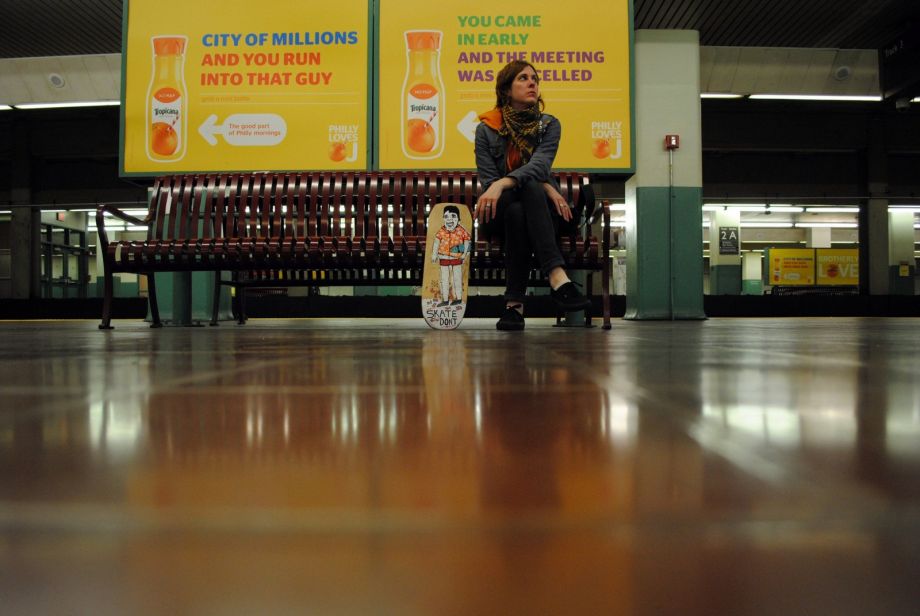
A woman waits for the train in Philadelphia. (Photo by Jukie Bot on flickr)
Brad Lander, a councilman from Brooklyn who campaigned for much of his career to advance these policies, perceives the resistance as a failure of government.
“I don’t think we’ve done enough to communicate with people about the work we’re doing to preserve and strengthen neighborhoods, and to get them to think about planning in the face of growth and gentrification as something that can preserve what people love about their neighborhood,” says Lander.
But people like Pelosi seem convinced they will be driven out of the city first. For now, Kenney seems to regard that as an opportunity.
“As South Philadelphia changes with a younger demographic, you’ll have an easier chance of getting that stuff done,” he says. “I’m from South Philly and I’m very much aware that some people are never going to be happy until the day they close the lid.”
To be clear, Kenney’s talking about the lid of a casket. With morbid rejoinders like that, it sounds less likely he’d kowtow to old friends and neighbors than repeat his predecessor’s mistakes, alienating the same people he hopes will benefit from urbanist policies.
If he’s worried about ending up like the latter-day Nutter, politically isolated and eking out small victories when possible, he doesn’t show it. He seems to think that it might just be a message — love it or leave it — that people need to hear from him, rather than a guy like Stober.
“I have taken positions in my career that have not made a lot of those folks happy. LGBT rights, immigration rights, marijuana decriminalization. These are issues a lot of my core constituency and people that are friendly with me do not understand,” he says. “But ultimately, hopefully, they do understand. When you do the right thing, and not just the popular thing, you’re hoping that the right thing becomes popular.”
Our features are made possible with generous support from The Ford Foundation.
_200_200_80_c1.jpg)
Ryan Briggs is an investigative reporter based in Philadelphia. He has contributed to the Philadelphia Inquirer, WHYY, the Philadelphia City Paper, Philadelphia Magazine and Hidden City.

20th Anniversary Solutions of the Year magazine